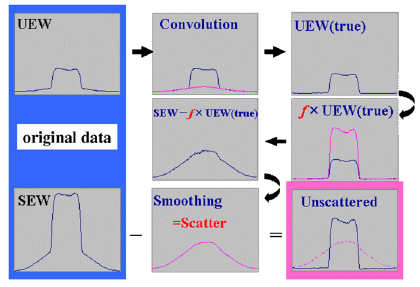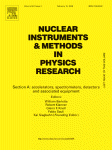| TITLE |
|---|
| AUTHORS |
| SOURCE |
(doi: 10.1016/j.nima.2006.10.070)
|
| ABSTRACT |
|
The jPET-D4 is a brain positron emission tomography (PET) scanner composed of 4-layer depth-of-interaction (DOI) detectors with a large number of GSO crystals, which achieves both high spatial resolution and high scanner sensitivity. Since the sensitivity of each crystal element is highly dependent on DOI layer depth and incidental g ray energy, it is difficult to estimate normalization factors and scatter components with high statistical accuracy. In this work, we implemented a hybrid scatter correction method combined with component-based normalization, which estimates scatter components with a dual energy acquisition using a convolution subtractionmethod for an estimation of trues from an upper energy window. In order to reduce statistical noise in sinograms, the implemented scheme uses the DOI compression (DOIC) method, that combines deep pairs of DOI layers into the nearest shallow pairs of DOI layers with natural detector samplings. Since the compressed data preserve the block detector configuration, as if the data are acquired using ‘virtual’ detectors with high g-ray stopping power, these correction methods can be applied directly to DOIC sinograms. The proposed method provides high-quality corrected images with low statistical noise, even for a multi-layer DOI-PET.
 Fig. 3. Flowchart of hybrid dual energy (HDE) scatter correction method. |
| KEYWORDS |
| PET (positron emission tomography); DOI (depth of interaction); Normalization; Scatter correction |
